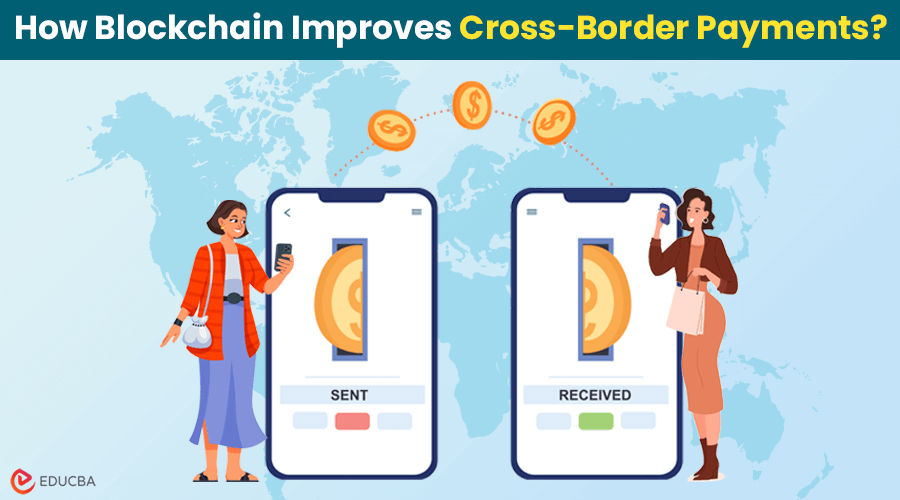
Why Use Blockchain for Cross-Border Payments?
Cross-border payments are transactions that involve sending money from one country to another. They are essential for international trade, remittances, tourism, and e-commerce. However, there are several challenges, including high fees, slow processing, lack of transparency, and regulatory compliance. The solution to all the challenges in cross-border payments is the use of blockchain, which can transform the industry by offering faster, cheaper, and more efficient solutions.
Let’s see how blockchain technology can help improve cross-border payments.
How Blockchain for Cross-Border Payments Works?
Blockchain can facilitate cross-border payments in different ways, depending on the type of network and protocol. Some of the common methods are:
- Cryptocurrencies and Stablecoins: Individuals and businesses can easily transfer these digital currencies over blockchain networks without intermediaries. They reduce the fees and risks of cross-border payments while offering different levels of price stability.
- Tokenization: Tokenization means turning any asset into a digital token that anyone can trade on the blockchain. It can enable cross-border payments for various investments, like securities, commodities, real estate, art, and intellectual property.
- Smart Contracts: These are agreements that automatically execute and settle cross-border payments based on predefined rules and conditions, reducing fraud, errors, and disputes for cross-border payments.
Benefits and Challenges of Blockchain for Cross-Border Payments
| Benefits | Challenges |
| It offers lower costs, faster speed, greater transparency, and enhanced security. | It needs to overcome scalability issues that affect its performance and efficiency. |
| It allows sending and receiving money all around the world without intermediaries. | It must also comply with different regulations, which vary by country and authority. |
| It is easy to access and verify the transaction data in real time and protect your assets from fraud. | Blockchain needs more research for widespread acceptance from stakeholders, such as consumers, businesses, banks, regulators, and governments. |
The Future of Blockchain for Cross-Border Payments
Blockchain technology is still in the early stages of development and adoption for cross-border payments. However, it has already shown great promise to create value and revolutionize the industry.
A collaboration study by PYMNTS and Circle showed that more than half of their respondents (56%) reported using at least one blockchain network in their operations. It indicates how most multinational businesses are actively using blockchain technology. However, the future of blockchain for cross-border payments depends on how the technology overcomes the challenges and leverages its benefits.
Some of the trends and developments that could shape the future of blockchain for cross-border payments include:
- Suitable for numerous use cases and applications: Blockchain technology can enable cross-border payments for various use cases and applications, like remittances, trade finance, e-commerce, humanitarian aid, digital identity, etc. As more use cases and applications emerge, there will be more demand and value for blockchain-based cross-border payments.
- Enhanced collaboration and integration: Blockchain technology can foster more collaboration and integration among different stakeholders and platforms for cross-border payments, such as banks, fintechs, regulators, and governments.
- More innovation and experimentation: Blockchain technology can inspire more innovation and experimentation for cross-border payments, including new protocols, networks, tokens, and services. As more innovation and experimentation take place, more diversity and competition for blockchain-based cross-border payments will emerge.
Final Thoughts
Any blockchain conference will tell you blockchain is a game-changer for many industries and sectors, especially cross-border payments. It can offer faster, cheaper, and more efficient solutions that benefit various stakeholders and customers. Blockchain is an amazing technology to level up cross-border payments and beyond.
Recommended Articles
We hope you found this article on “Blockchain for Cross-Border Payments” useful. For similar blockchain-based articles, check out recommendations.
